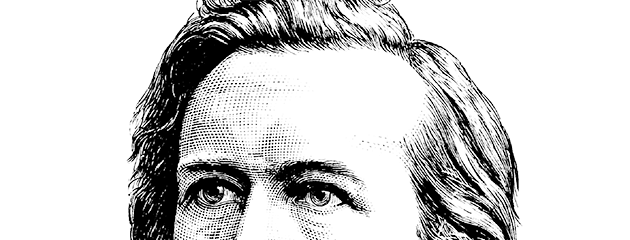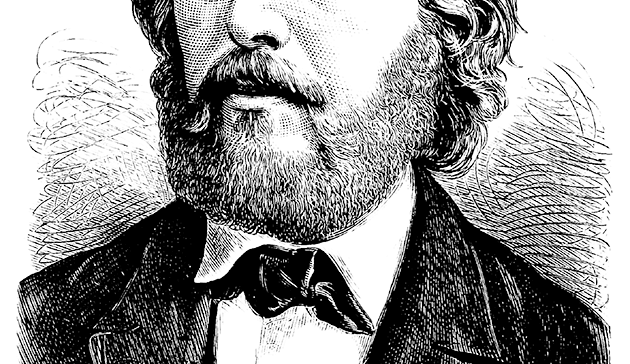CRITERIA OF ADMISSION
All handwritten, dictated or texts that have been handed down in writing by and to Ernst Haeckel are accepted, those which can be proven to fulfil the function of letters or through the intention of delivery. This includes letters (in the narrower sense), letter-cards, plain postcards, postcards with views, telegrams and autographed business cards, but also poems, invoices, receipts, inventories and similar documents if they are letter-like in nature (e.g. with a greeting and closing words, or valediction with a signature), or are delivered as enclosures with letters. Letters from the family environment, although not addressed directly to Haeckel, will be accepted in exceptional cases if they circulated within the family and refer to Haeckel. Official and administrative documents are also taken into account.
Illustrations as well as surviving enclosures (e.g. drawings, geographical sketches and maps, herbarium cards, sheets and documents) that can be unequivocally assigned are noted and described in the metadata.
Addressees or recipients can be private individuals as well as corporations (firms, companies, institutions or organizations).
TEXT BASIS
The texts are based on the handwritten or typographically transmitted originals, and where these are lost or no longer accessible, those prints or partial prints that could be identified as the most reliable source for the corresponding texts of the letters. Incomplete surviving manuscripts are supplemented by any existing prints or facsimiles. Copies of letters are preferred to printing if they are closer to the lost manuscripts than the printed one. If the letter has only been handed down as a draft, this forms the basis of the edited text. Partial prints, handwritten or printed fragments from Haeckelʼs correspondence form the basis of the text if they are the only surviving textual witness of a letter.
TEXT CONSTITUTION
The text is printed true to the letter and character according to the underlying template. The punctuation as well as the specific capitalization, upper and lowercase, hyphenation and aggregation are retained throughout. If the graphical findings do not allow a distinction between uppercase and lowercase letters (e.g. D-d, F-f), the semantic context as well as the specific writing habits of the author and the general writing habits of the time) are used for the final decision. Grammatical and spelling errors are retained, and any missing umlaut marks, punctuation marks and standard accents are not added. Exceptions made are the frequently missing closing characters in brackets and quotations, as well as punctuation marks at the end of a sentence, which are tacitly added. The edited text appears in the basic font recte, all additions made by the editors (including indirect quotations from letters or summaries taken from auction catalogues) appear in square brackets and in italics.
Missing words and letters (including those that can be clearly identified) are added in italics. Slurrings at the end of a word are basically dissolved and added in italics. In the case of ambiguous findings, the supplemented endings are put in square brackets, e.g. for singular or plural suffixes. Cancellations with abruptions in words (e.g. Wohlgebℓ, Hℓ) are added in italics, abruptions in currencies or units of measurement (e.g. rℓ, fℓ) are retained and shown in the list of abbreviations.
Dittographies when changing pages are eliminated. The gemination line (n, m) is resolved to double spelling; the double hyphen are reproduced uniformly as a single hyphen.
All forms of text highlighting are retained: underlined words appear underlined in the text, words underlined twice are displayed as underlined twice, superscripted letters or words are superscripted, etc.
Commonly used abbreviations are not added to the edited text. Currency information is reproduced with the correct letters or characters (while maintaining the different spellings). Frequently used abbreviations and characters are broken down in a separate directory, whereas occasionally used abbreviations or characters are explained in the comment section.
Letters and numbers that cannot be clearly deciphered are interpreted, illegible letters and numbers are marked with horizontal crosses [X for uppercase, x for lowercase], illegible words with three horizontal crosses [Xxx or xxx].
Loss of text in the original, e.g. due to damaged paper, is indicated by a space in square brackets [] and shown in the description of the manuscript.
Except at the beginning of the letter, paragraphs in the text are indicated by indentation.
The change between current script and the Latin script of the original in the letters is not taken into account in the edited text. In the second half of the 19th century, parallel to the „Kurrent script”, the Latin script established itself as the normal script. In addition, machine writing with Latin letters is often used, so that the specific use of Latin letters for foreign words or scientific terms ‒ which was still partly in use in Haeckelʼs correspondence in the 18th century ‒ plays only a minimal role.
If the text has to be reproduced after a print, clear printing errors will be included in the edited text.
Text passages that have been crossed out or otherwise improved by the author are marked with uppercase /lowercase letters in the text and explained in the critical part, as they make the intellectual process of the letter writer comprehensible. The details of addresses, forms, symbols or other notes are reproduced as completely as possible.
The beginning and the end of a letter is based on the spelling in the original, so that the line case is largely preserved. The mostly complex spatial arrangement of greetings and closing formulas is standardized for typographical reasons. Page breaks are indicated by || marked. Line breaks in dates and in the address information listed in the text-critical apparatus are indicated by | marked.
TEXT DESIGN
Letterhead
The printing begins uniformly with a left-aligned letterhead (editor text), which contains the basic data of the letter.
Sender and recipient are listed with their first names (if known only the first name) and family names without official titles. Persons of nobility are listed commencing with the title „Graf” (earl) with the addition of the title. Predicates of nobility (von, von and zu, etc.) are not abbreviated. Personal names are given according to the valid marital status (e.g. women are kept under their maiden names until they get married; women who have been married several times under their respective family names).
If several persons known by name are the writers or addressees of a letter, all names are indicated in the letterhead and, if necessary, it is indicated whether these are postscripts or inscriptions.
In the case of historical companies, institutions or organizations, the name customary at the time the letter was written applies. If the orthography of a name changes in the course of the correspondence, a uniform form is chosen for the heading. Job titles or titles are only in the letterhead if no first names could be determined.
The last part consists of the place and date of the letter, with the name of the month written out. When specifying the place of dispatch, the historical form of the name is chosen in present orthography.
Information that has been developed is put in square brackets, information that has not been determined is given with „o. O.” or „o. D.”. A question mark is placed after information that is doubtful and questionable. Dates that are taken from the postmark are considered to be indexed.
Letter text
After the letterhead (editor text) and a blank line, the letter text begins left-justified in the basic font recte with the salutation. The date is set right justified. The spatial text arrangement is reproduced according to the structure. Postscripts on the edge of the template appear in print at the end of the letter after the signature. Additions with or without reference signs appear in the edited text at the point to which they belong and are noted in the text-critical part of the apparatus. The partially available address details are also listed in the apparatus.
Text-critical part
In the transcribed text of the letter, the critical comments are marked by uppercase letters. In the subsequent text-critical commentary, Haeckelʼs corrections (e.g. „deleted”, „inserted”, „corrected from”), possible text variants, notes from someone elseʼs hand, comments on presentations and answers, from someone elseʼs scribes, etc., are noted. If there are no corrections in the handwriting and there is nothing else to be noted about the text, this section is omitted.


